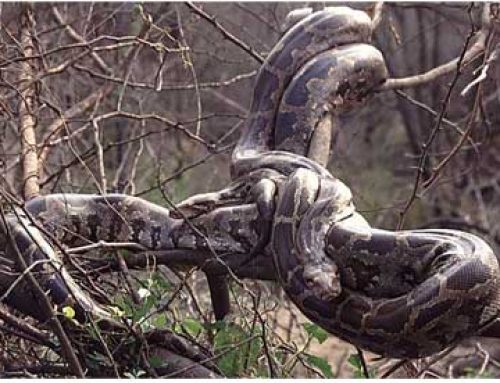
Pine trees – A Spruce tree is a type of gymnosperm and conifer
Too dry for ferns and moss
Near the end of the Carboniferous period, about 300 million years ago, the land on Earth got a lot drier than it had been before. It was drier because plate tectonics was bringing all of the land together into one big continent, Pangaea. Plants that needed a lot of water, like ferns and moss and mushrooms, started to die out.
Carboniferous Period
What are plate tectonics?
Evolution of ferns
What about moss?
All our biology articles
Evolution of gymnosperms
Plants that could live with much less water did better. That was a big advantage in the drier climate. So these dry land plants soon spread all over the new big continent of Pangaea. These plants were pine trees, or conifers. We also call them gymnosperms, meaning “naked seeds”.
Why are they conifers?
They’re called conifers because they had pine cones, from the Latin words “conus” meaning cone and “ferre” meaning to carry. Inside the pine cones were seeds to make little pine tree babies.
How seeds evolved
What are spores?
Plant reproduction
Trees that could make seeds had a big advantage over earlier trees and ferns that only made spores. Spores were delicate and had to land on something wet in order to keep them alive so they could grow new plants. If the spore didn’t hit a good place right away, it would die. So all plants that made spores had to grow near water.
But seeds had a hard coating on them, and they could live a long time, blowing around in the wind, until they came to a good place to grow. If they fell on dry land, they could wait until a rainy season started before they began to grow – some of these seeds could wait for years and years, even centuries if they had to.

Ponderosa pine cones
Cold, dry places
Thanks to their seeds, pine trees could grow in drier places than the older plants. This was about the same time as the first crocodiles were evolving, and for the same reason – the pine trees had hard seeds that could make babies without water, and the crocodiles had hard eggs that could do the same thing.
More about crocodiles
The Permian period
Evolution of eggs
Because all of the land was gathered together in one big continent at this time, pine trees could spread easily over all of the land on Earth. During the Permian period, from about 290 million years ago to about 245 million years ago, it was cold and dry, and pine trees evolved that could live in very cold weather.
Flowering plants evolve
Later, when plate tectonics split up the continents again, all of the continents had pine trees on them. But when flowering plants like fruit trees, flowers, and grasses evolved, in the Cretaceous period, about 145 million years ago, they quickly took the place of pine trees in warmer areas. Pine trees today grow mainly in colder places where it is too cold for the flowering plants, though there are still many pine trees even in warmer places.
Learn by doing – Collecting Pine Cones
And finally flowers!
Bibliography and further reading about gymnosperms or pine trees:




